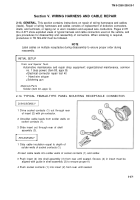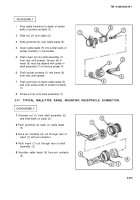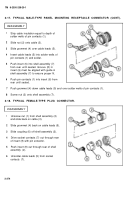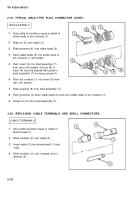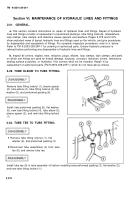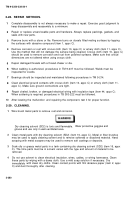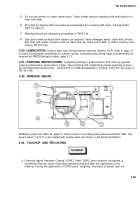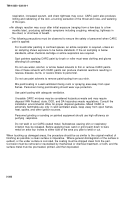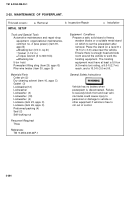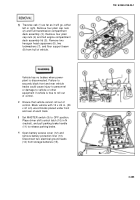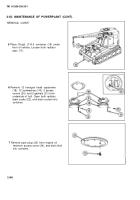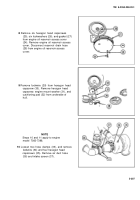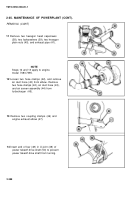TM-9-2350-238-20-1 - Page 406 of 1364
TM 9-2350-238-20-1
2-28. REPAIR METHODS.
1
2
3
4
5
6
7
8
9
10
Complete disassembly is not always necessary to make a repair. Exercise good judgment to
keep disassembly and reassembly to a minimum.
Repair or replace unserviceable parts and hardware. Always replace packings, gaskets, and
seals with new parts.
Remove burrs with a stone or file. Remove burrs on closely fitted mating surfaces by lapping
the surfaces with abrasive compound (item 1, appx C).
Remove corrosion or rust with crocus cloth (item 10, appx C) or emery cloth (item 11, appx C).
Use the method that will not damage the surface being cleaned. Crocus cloth (item 10, appx C)
should be used to remove corrosion and rust from polished surfaces. Make sure that critical
dimensions are not altered when using crocus cloth.
Repair damaged threads with a thread chaser or die.
When welding is authorized, procedures in TM 9-237 must be followed. Welds must be
inspected for cracks.
Bearings should be inspected and maintained following procedures in TM 9-214.
Clean electrical ground contacts with crocus cloth (item 10, appx C) or emery cloth (item 11,
appx C). Make sure ground connections are tight.
Repair chafed, broken, or damaged electrical wiring with insulation tape (item 44, appx C).
When soldering is required, procedures in TB SIG-222 must be followed.
After locating the
2-29. CLEANING.
1
2
3
4
Wire brush metal
malfunction and
parts to remove
repairing the component, test it for proper function.
rust and corrosion.
Dry cleaning solvent (SD2) is toxic and flammable.
Wear protective goggles and
gloves and use only in well-ventilated area.
Clean metal parts with dry cleaning solvent (SD2) (item 16, appx C). Metal or fiber brushes
may be used to apply cleaning solvent and to remove softened or dissolved material. Hand
scraping with metal scrapers may be used to remove soft coatings or deposits.
Soak oily or greasy metal parts in a tank containing dry cleaning solvent (SD2) (item 16, appx
C). The time parts must be in solvent varies with the type and amount of material to be
removed.
Do not use solvent to clean electrical insulation, wires, cables, or wiring harnesses. Clean
these parts by wiping with a damp cloth. Use a mild soap solution if necessary. Dry
immediately
C) and dust
with clean dry cloths. Clean contact points with flint abrasive paper (item 2, appx
thoroughly after cleaning.
2-380
Back to Top


